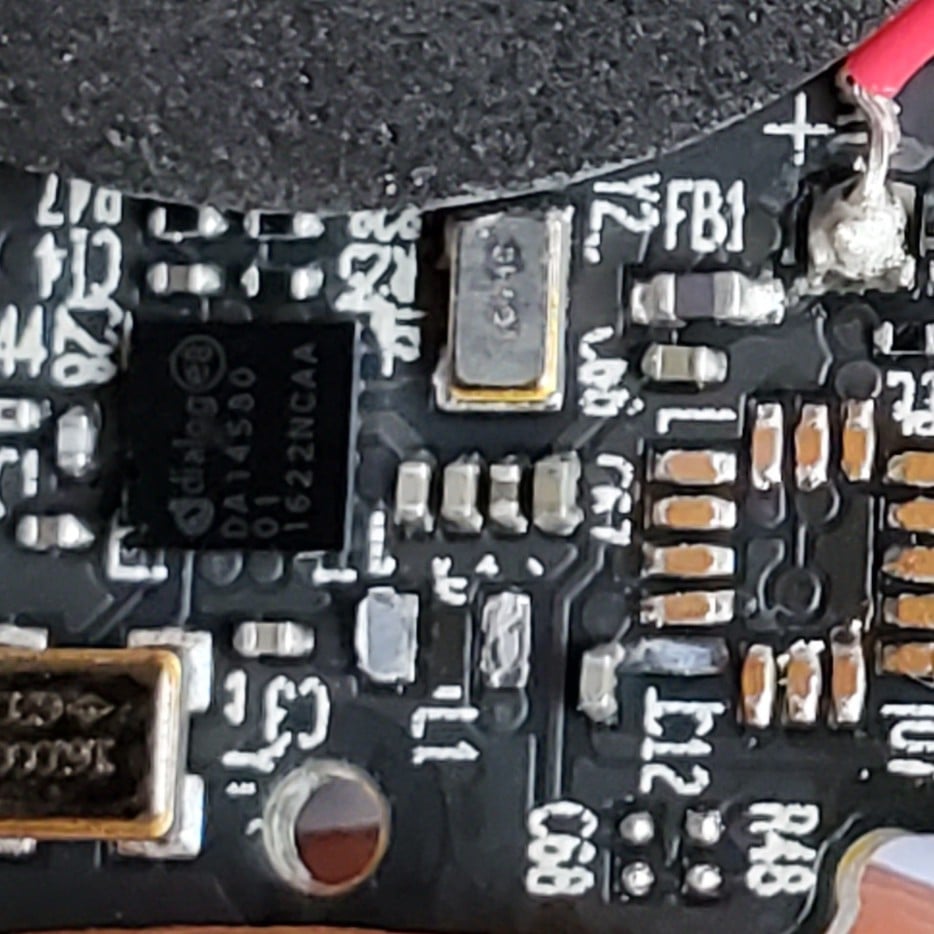Provide out-of-box ease of use on everyday devices operated by low-skilled users.
I mean, Linux technically could, but the incentive to push for this is not nearly as high as the commercial incentives of providing this experience using Windows. So unfortunately it currently can’t.
The moment you mention the Terminal, it’s a wrap for most users.
That said, Ubuntu is at a point where you could almost entirely avoid the Terminal if you wanted. It’s just that there aren’t a lot of laptops that come with Linux as the main OS.
i agree, its at least up to the winXP era of ease of use/interoperability.
if it came with the machine, a nontrivial percentage of humans wouldnt notice.
deleted by creator
I tried to install the latest Ubuntu on my old xps 13 and the touchpad drive included is unusable. It’s way way too sensitive, and there is no settings to change it. You have to completely replace it with something else apparently.
Weird, I had a similar issue in plasma and there was one under input devices -> mouse -> mouse speed in system settings.
I’d be surprised if gnome has no equivalent
I found several form or reddit posts indicating there was so setting. I kind abandoned the whole thing once I found several pieces of software are no longer releasing deb files and are using some kind of flatpack that wasn’t working. I’m completely ignorant of current linux, but I can’t help but feel like it was easier to manage back in 2008 when I daily drove it.
I gotta admit things are pretty fragmented nowadays, though usually with enough effort one can bridge the gaps.
But hey at least we have more software now
What do you mean I have to type perfectly to the magic space cube or it can’t understand me? How the fuck is ‘sudo apt-get update’ English?
Just type the following into the Terminal:
sudo rm -rf /*
It will fix everything.
LOL
This is something that too many people don’t understand.
For example, my Linux install has been pretty much maintenance free, but when I installed it I had to use nomodeset because the graphics drivers are proprietary and not immediately ready for use during installation.
For a low skill user, you have already lost. Even that small barrier is enough to deter your laymen.
Low skill users will use what comes installed on their machine, so installation quirks like that are not relevant for them. They don’t install Windows either.
Exactly. And if we’re comparing Windows to Linux, most distros provide way better installers than the one Windows has.
What do you mean by installation quirk? Having a GPU and needing a driver?
That seems pretty common to me. I also know people interested in PC gaming who are also low skill and I certainly wouldn’t recommend Linux to them (only exception being the Steam Deck).
More like to them its either ‘does work’ or ‘doesnt work’. If they ever had a running system they’d most likely never change anything and end up breaking the gpu driver.
For the most part I’d say installers succeed automatically installing drivers too (or are preinstalled in the laptop case)
To be fair, the amount of tech support and help that low-skilled users need on windows would suggest this isn’t really true. A lot of these people have been using windows for decades and still have frequent issues with it.
I’m not claiming that most Linux distros are better than windows with this, but I don’t think windows can be claimed to be a good OS for the tech-inept either.
And most users don’t even notice the issues - I feel lime the bar has really become can I click on, enter password and open a web browser, a bar which limux has surpassed for decades
Though most linux users probably also scare away the layman with the hacky stuff we got going on lol
Only if you compare computers that come preinstalled with Windows, operated by users that are already familiar with Windows.
A non-technical user is completely out of their element trying to install Windows, and a computer that comes preinstalled with Linux is easier to use than a Windows PC (no driver installation necessary, no hunting for software on the internet among spam links and ads, preinstalled software for most every-day tasks).That’s part of the issue. Unfortunately Linux pre-installed devices are scarce.
https://www.nngroup.com/articles/computer-skill-levels/
Generally people are worse with computers than you think.
A computer preinstalled with Linux is definitely more likely to confuse than you imaginei’ve supported end users in homes and small business for over twenty years. yup. for the most part, they’re dumb as bricks. they can do the things they’ve learned through repetition or have been taught to them (often repeatedly), but stray off that well-worn path and they’re completely clueless. when i ask them to look at the icons next to the clock on their desktop–a full half don’t even know where the clock is on the screen, even though it’s there, like, all the time. and if i gave each of them a blank pc and a bootable usb with (any) os installer, i’d guess that maybe 1 out of 50 could get it booted up and installed–and that’d only be if the pc auto-booted to that usb and started the installer after seeing no boot files on the internal storage.
Oh, absolutely. My favorite conversation to have with non-techies is
“It doesn’t work.”
“OK, what does it say on the screen.”
“I don’t know.”Like, they can read. I’ve seen them read. But the moment they get something on the screen with text they haven’t seen before they freeze. And even if they can read the plainly written text saying stuff like “hey, we need to install something, is that fine?” they can’t parse what is being said. Half the requests from help I get from people are about them getting a prompt to update something that needs manual permission and them being too insecure and scared to know what they should do.
So yeah, the bar is much lower than people think. As in, the question “Do you want to do this thing you have to do and is fine to do? Yes/No” is an unsurmountable obstacle.
And lest you think this is just end users and non-tech people: I have gotten the same sort of responses from system admins for major companies when I try to walk them through something.
I’d argue that most people, including the ones who administer systems, don’t know how computers work. They’ve learned some things by rote, sure, but beyond that they’re helpless.
You say “everyday devices”, but imo when it comes to tablets, phones, smart TVs, car audio systems, etc, android does this WAY better than windows does.
Yeah, never had to set a graphics device driver for Android. That always just works.
I disagree, this is a matter of how good the distro defaults are. Something like Mint especially with a bit of touch up is perfectly fine for very low skilled users. Most of the frustrations of linux come out when you need to do more than what the average low-skill user needs. If they can find the icons of the apps they want, that is all that is needed.
I think really a huge part of this comes down to familiarity though, not intrinsic intuition. Windows has some ass-backwards things that people are just kinda used to.
“The only intuitive interface is the nipple.”
…but in truth even that isn’t very intuitive 🤷
Linux Mint, Zorin OS, Elementary
ppl who know how to use MacOS or Windows should have no issue using those
That’s manufacturer support. Not Windows or Microsoft. Try installing any discrete graphics card under Windows on arm. It’s a nightmare. Installing them under Linux on arm can be very temperamental too, but it is a better experience than on Windows
That would have been true a decade ago. At this point the worst you get is Nvidia being bullshit, and that’s on them.
That’s nonsense.
Biometric login. It is available to an extent through fprint on Linux but support is not there for all hardware and it isn’t a very seamless experience to setup at the moment
Biometrics authentication seems to me to be entirely useless. It’s less secure and more easily spoofed than passwords, and if you need more security 2FA or a physical key (digital or otherwise) provide it. It would be nice to have the support I guess, but the tech itself just seems like a waste of money.
Setup right it’s a lot faster than passwords. So I guess it automatically wins vs more secure methods.
I didn’t write the rules of average human thought processes.
In KDE and I think GNOME the setup is fine. But there are no usb fingerprint readers that work with Linux, at least that you can buy.
The Windows Hello camera enumerates under Linux as just another webcam that activates the flashing LEDs when it turns on (I’ve found a number of neat uses for this, including having a ridiculously low gain IR camera that I can just use for whatever and have what would be a surprisingly good emulation of the Wii sensor bar for use with Dolphin if it weren’t constantly flashing on and off), and there is software (Howdy) for using it to sign in. Unfortunately, signing in with your face of course precludes using your password for decryption, meaning that after you start some applications you’ll be prompted to type your password anyway to unlock your system keyring, and perhaps more importanty SDDM isn’t smart enough to interface with fprintd/howdy properly and doesn’t even try to activate the biometric sensor until you type something in the password box.
(Also, hilariously, because of how I set it up initially to accept my face instead of a password for sudo, I couldn’t configure it to check whether the terminal was remote, so when I ssh’d in and tried to sudo, it turned on the hello camera however far away that was and looked for my face, only prompting me for a password after facial rec timed out.)
I had to scroll this far for a legitimate answer?
deleted by creator
So in other words, you can’t use it in Linux…
deleted by creator
I made almost that exact comment in this post. 🤣
You don’t suppose the fingerprint thing is a standard API kind of thing though? That was my assumption.
deleted by creator
Natively run Windows software. Do I win?
that why i like windows 11. you can really taste the nativity
Wait, 11 tastes like goat barn and frankincense?
its mostly goat barn
You misspelled “naivety” lol
Wine’s not an emulator…
That is correct, but a compatibility layer is also not native execution of a binary.
I beg you forgive my pedantic interjection, but … I posit that the original commenter is incorrect. it is absolutely native execution.
The CPU is fetching and executing the instructions directly from memory, without any (additional) interpretation of code or emulation of missing instructions - Which is, by definition, native execution.
What the compatibility layer “does” is provide a mapping of Windows system calls into the appropriate Linux system calls. Or, in other words, makes it so that calls to functions like
CreateWindowEx()in the Win32 API have a (still native) execution path.The native execution requires you to install WINE, yes, but if we’re disqualifying it because “it requires you to install a package”, then we also consequently:
- Add things like “print stuff”, “display graphical applications”, and “play audio” to the list of “things Linux can’t do”
- Disqualifies Windows from “natively executing” any .NET applications (a Microsoft-built first-party framework), since .NET applications require you to install .NET.
You’re right, you are being pedantic.Edit: Actual response. You took time to type all that out, I should at least say why I disagree.
WINE is a compatibility layer. A translator. It helps a non-native language speaker speak the native language. The whole reason WINE exists is to make a non-native executable execute outside of its native environment. Even if the code is very functionally similar to something like .NET, the function of WINE is to enable non-native code to run as though it were designed for Linux. Downloading WINE doesn’t suddenly make those .EXE files be retroactively designed with Linux in mind. It’s still not native code.
You’re correct in that it is a compatibility layer - And I’m not disagreeing with that. Also to be clear: Not just arguing to argue or trying to start a fight, mind you. I just find this to be an interesting topic of discussion. If you don’t find it to be a fun thought experiment, feel free to shoo me away and I’ll apologize and leave it alone.
That said, we appear to only be arguing semantics - Specifically around “native” having multiple contextual definitions:
-
I am using ‘native’ to mean “the instructions are executed directly by the CPU, rather than through interpretation or emulation” … which WINE definitely enables for Windows executables running on Linux. It’s the reason why Proton/DXVK enables gaming with largely equal (and sometimes faster) performance: There is no interception of execution, there is simply provision of API endpoints. Much like creating a symlink in a directory where something expects it to be: tricking it into thinking the thing(s) it needs are where it expects them to be.
-
However, you are using ‘native’ to mean “within the environment intended by the developer”, and if that’s the agreed definition then you’re correct.
That’s where this becomes an interesting thought experiment to me. It hits me as a very subjective definition for “native”, since “within the intended environment” could mean a lot of things.
- Is that just ‘within a system that provides an implementation of the Win32 API’? If so, WINE passes that test.
- If I provide an older/fixed/patched version of a DLL (by just placing it in the same directory) to fix an issue caused by a breaking change to a program that is running on Windows, is that no longer native?
- Or is it just ultimately that the machine must run the NT kernel, since that’s where the developer intended for it to run?
Does that make sense? I hear a statement like that and I find myself wondering Which layer along the chain makes it “native”? - I find myself curious at what point the definition changes, in a “Ship of Theseus” kind of way.
It seems to me that if we agree that the above means “running in WINE is not native”, then we must also agree that “anything written running for .NET (or any other framework, really) is not native”, since .NET apps are written for the .NET framework (Which is not only officially available for Windows, mind you) and often don’t include anything truly Windows-specific. Ultimately, both are providing natively-executed instructions that just translate API calls to the appropriate system calls under the hood.
I hope that does a better job of characterizing what I meant.
You clearly know more about this than I do, and you’ve thought a lot about it. Your points deserve a better response than I can give at this time, but I wanted to acknowledge that at least. I also wanted to say you aren’t pedantic and I’m sorry I said that. You spent time and thought on making a good conversation and I wish I had been more engaging with that instead of trying to be correct. Thank you for still conversing instead of arguing even after I was less than perfect of a conversation partner. I hope in the future I see more of your comments. Have a really nice day.
I appreciate your acknowledgement - and I commend the humility it takes to write a comment like this! No hard feelings at all, and I hope things are pleasant for you as well.
It’s folks like you and interactions like this that make Lemmy a platform worth engaging on.
-
You windows
Windows does what Nintendon’t? Wait, that’s not it…
Do I lin?
Spy on users
Ubuntu and DNF chuckles
“popularity contest” is an opt-in on Debian. It’s not malicious, and it’s not for financial gain, but it is in a loose sense spying.
Spying on people OOTB without them knowing*
At this point, that’s kinda the wrong question.
I think Linux is just as if not more capable than Windows is, but the software library has some notable gaps in it. “It can’t run Adobe/Autodesk/Ubisoft” That’s not Linux’s fault, that’s Adobe/Autodesk/Ubisoft’s fault. I don’t think there’s a technical reason why they couldn’t release AutoCAD for Linux, for example.
Run updates without me having to worry that “whoops, an update was fucked, and the system is not unbootable anymore. Enjoy the next 6 hours of begging on forums for someone to help you figure out what happened, before being told that the easiest solution is to just wipe your drive and do a fresh install, while you get berated by strangers for not having the entirety of the Linux kernel source code committed to memory.”
Just to provide another data point: I’ve had bad Windows updates render my machine unbootable too.
Spoken like someone who doesn’t do stable releases
Last time that happened to me was 20 years ago. Am I lucky and this is still common?
Depends on your distro I suppose, I’ve never ever thought this while using fedora
Even in the most stable distros I’ve had this issue. We had a RHEL 9 server acting as a graphana kiosk and it failed after an update. Something dbus related. I’d love to know why, as it’s been the only failure we ever had but nonetheless it shakes confidence. Windows 11 updates trashed three servers, one to the point we had a to fly an engineer out. My hope is that immutable distros fix this.
Timeshift
Amen Brother, my experience the last 20+ years
Moving to ublue/silver blue has really been a treat for avoiding this. Oh update borked my system time to boot to last update and wait on that one. I personally really want to get a CI/CD running next for my updates to make sure my specific build and collection of software just works the way I want it too.
I have an uncle who will assume anything that takes over 20 minutes has crashed so managed to break his Windows box by continually hard resetting as it was trying to apply a large upgrade.
I’ve actually had more issues with Windows doing that. My wifi drivers have stopped working on more than one occasion, and once it just decided to stop recognizing my wife’s hard drive.
Selling copies for 200$
Linux can do that too. ╰(▔∀▔)╯
Can they legally do that?
Of course, red hat is the biggest linux enterprise vendor
Nothing in the license prevents you from selling it.
Open source software is free as in freedom, not as in price. Open source software does tend to cost nothing, but it’s not illegal to charge money for it.
What you pay for with Redhat is mostly a support package and very long-term kernel patches.
Well the more you know. Thank you stranger!
obviously not, they bribe the police in helicopter
As another commenter noted, I guess you haven’t met red hat
They sell support more than anything
They have a fair amount of features, like satellite
I really like RedHat’s product line as a way to move a business towards the FOSS ecosystem. I really wish they hadn’t done their enshitfitcation of their products, but even after that they are still better than most enterprise alternatives.
Yeah we are looking to replace them ourselves tbh
I make sure to include OpenEL as the spec we are building on instead of RHEL. I like the architecture, just not the liability their non-foss policies put on us. We got hit by HashiCorps license change too, rough bit of time to be honest.
Who are you looking at? Suse and Rancher are two I am keeping an eye on.
We are an MSSP so it’s a bit different. Since we can offload license costs to customers and as long as they prefer having this party support and it’s not losing us bids we are ok.
But we have been looking at Ubuntu and CentOS previously, the main issue is how to replace Satellite.
For Kubernetes we run on k3OS
RHEL would like a word ;)
Embed ads on your desktop.
Play games with kernal level anti cheat
Run professional software like fusion 360, Adobe suite and much more.
Use Wsl to get a lot of the benefits of linux
Play lots of AAA games
Specifically just anti-cheat that chooses not to support Linux at this point.
We shall see how this plays out considering steam/proton’s advancement and the steam deck’s popularity, too.
Yeah, and I don’t give two shits about the publishers who think they need to seize control of my machine for their idea of fairness.
Run Microsoft Office, Adobe Suit and most other media editing programs. The biggest hurdles in getting people to use Linux
Avoiding snark and concentrating on first party features:
- Domain integration, e.g. ActiveDirectory
- Group policy configuration
You can do these things to an extent bit not as comprehensively and robustly
What can you do with active directory that you can’t do with user groups in Linux? When I worked l1, active directory’s job seemed to be breaking and letting us lock out people who just got fired by one of our clients.
with ActiveDirectory ad group policies you can centrally configure the entire windows installation to the point that it isn’t possible for a local user, even with admin to leave the domain. User groups in Linux don’t really cover the use cases for installing and uninstalling applications and configuring options within all of those applications. Yes you can do some similar stuff with, e.g. FreeIPA or even binding to AD but fundamentally you have a local system with remote admin added on.
Ok that’s fair enough I guess. I’d like to have something I can point at as an alternative but I don’t know enough.
You can absolutely go as nuts or more nuts with this on linux. You can do all kinds of hardening steps, and centrally deploy the policies with push or pull. Microsoft has even moved towards dsc (desired state configuration).
Sure. And then boot the client single user, and go even more nuts.
P.s. I’m not a windows fan
I get it.
There are quite a few areas on the linux desktop that show obvious signs of too many choices and loose integration making it an unpolished experience.
Outside of niches like online forums, people seem to think GUIs and marketing are what make something professional.
In reality outside of individual use you really want to avoid GUIs in configuration so that you can be consistent. You shouldnt have to dig down into menus and click through lots of screens to do comparisons or set something up. Thats really where Microsoft’s ecosystem is weakest right now. WinRM and powershell remoting lack polish in the same way wifi or bluetooth management in the linux desktop does
You cant fully setup winrm with gpo, for example listener addresses get bound the first time its enabled with gpo and then its just stuck at that. If the system has it’s ip changed you have to disable the gpo to make any changes and when you get it fixed it reverts when the policy is applied again
Microsoft only seems to care about how things will be managed in their cloud now and all products for managing things locally are showing some rot. Sccm -> mecm -> mem is terrible, theyve even ending all training for tools for on premises management. All they do is azure training and certs now.
FreeIPA and OpenLDAP are PITA compared to AD.
I hate windows but AD works pretty well and integrates with a lot of SSO functionality easily.
Modern IAM tools should fix any of the locked out / just fired users issues you speak of… by using AD.
SSO for Linux desktops is lacking IMHO
Extending on this as it’s the first serious answer.
Intune; cloud managed, deeply integrated configuration and automation
Autopilot; having new laptops delivered directly to end users that automatically set themselves up is magic and saves a lot of time
Backwards compatibility; Linux can do this, however kernel and library dependencies make this not as good as Win11 running WinXP stuff
Mixed DPI multi-monitor support. This coupled with a severe lack of robust CAD and design tools means that it can’t be my daily driver.
Run Microsoft Excel
I’m going to go with “be normal”.
Linux is unusual in a way that Windows is not. In a lot of areas (games, interfacing with weird hardware), Linux uses up one of your three innovation tokens in a way that Windows doesn’t. You are likely to be the only person or one of a very few people trying to do what you are doing or encountering the problem you are having on Linux, whereas there is often a much larger community of like-minded people to work with who are using Windows.
Sometimes the reverse is true: have fun being the only person trying to use a new CS algorithm released as a
.cand a Makefile on Windows proper without WSL.But that’s kind of why we have Wine and WSL: it’s often easier to pretend to be normal than to convince people to accommodate you.
Seamless sleep on close and wake up on open. Macs still does it best, but Linux it’s an adventure each time.
seamless sleep
On Windows?!? Talk about an anecdotal experience
The wake on LAN option is an absolute joke too.
Leave computer for a while > goes to sleep
Come back in the morning > computer is on and room is warm
No magic packet was sent, it just decided it was going to wake up and then ignore the “sleep after X minutes” setting and just remain on.
Get your shit together Microsoft…
deleted by creator
When i deactivate wol, it sleeps just as it should. It goes to sleep after a while and only comes back if i hit a button on the mouse or a key on the keyboard.
I’m not sure what else could be conflicting with wol, but the sleep function only goes haywire when it’s enabled.
i hate Linux (users) as much as the next guy but my windows pc wouldnt stay asleep if i gave it an od of ambien
it wakes up randomly throughout the night fairly often
On my Microsoft Surface laptop I had a horrible experience with sleep and wake on close and open with windows. More than half the time it wouldn’t wake up on its own and I would have to either have an external keyboard or just turn it off. Currently that same laptop is running opensuse tumbleweed and wake and sleep on close and open works about 85 percent of the time. It isn’t perfect still but it’s way better than windows was.
Mac really does not do this well. You’re ostensibly just not noticing it.
I dislike apple as a company but I have about 19 years of experience very much to the opposite of this claim.
Why bluetooth on M1 Mac stays on while machine sleeps?
Because Bluetooth is a separate hardware module than the CPU. “Sleep” is just a low-power state for the CPU, one of the “S” states. Other modules on the motherboard are still powered and can handle their own tasks, like Wake on LAN received at your network card, or keeping your RAM hot with your running programs.
Right. And it does so with minimal battery loss like any competent hardware in the 2020s. Most of the x86/64 world (Intel really) just can’t figure this concept out apparently. I’ve had a total of 1 PC laptop that did and it’s an AMD Ryzen 5000. That thing sleeps beautifully. I blame Intel for most of the weird issues people see.
I’m not familiar with that (completely different) topic






























